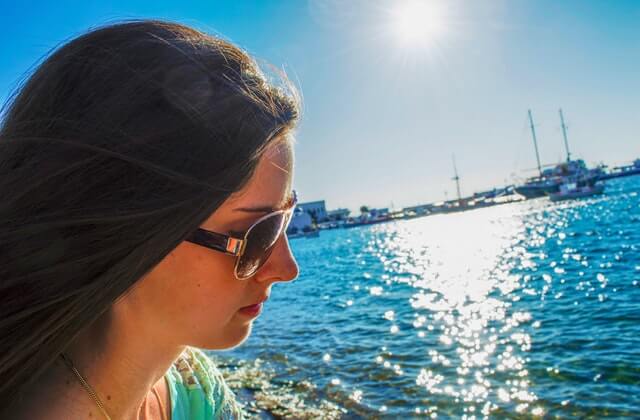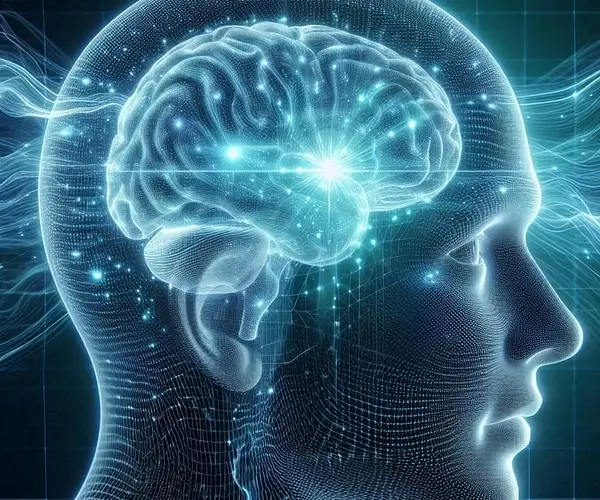Summer’s here and life’s finally feeling normal again, which means it’s time to whip out your bathing suit and sunscreen for some fun in the sun. Unfortunately, for those of us who are prone to migraines and headaches, warmer temperatures may also mean more frequent attacks.
But, is there really a connection between higher temperatures and migraines? And if there is one, is it possible to avoid heat-induced headaches during the summer months? Here’s what the research says.
What causes heat headaches?
A heat headache or migraine, like the name suggests, is a headache that develops after being exposed to the sun or hot temperatures for extended periods. You may have gotten one before, even if you don’t suffer from migraines, perhaps after falling asleep at the beach or from walking in the sun on a hot day for too long.
But the evidence on whether temperature changes really do cause headaches or migraines is scarce and conflicting. For instance, one theory is that heat itself may be a trigger, as evidenced by a 2009 study with over 7,000 participants.
Investigators reported that, during hot weather months, the risk of developing a heat-induced headache rose by about 7.5% for every 5 degree Celsius (9°F) increase in ambient temperature. There was also evidence of increased risk of headache when the barometric pressure, sometimes called atmospheric pressure, was low for 48 to 72 prior to the headache or migraine attack.
Conversely, a 2011 study conducted in Taipei noted an increase in headaches during the coldest months of the year, particularly in instances of cold fronts that made the temperature drop significantly and reduced sunshine duration. But investigators didn’t find any associations between heat and head pain.
Dehydration may be a risk factor
While we don’t have a clear answer on why headaches seem to be more frequent and severe in warmer temperatures, we do know that dehydration — which is extremely common during the summer — is a major migraine trigger and may play a role in heat-induced headaches.

Keep hydrated!
Simply put, dehydration happens when you don’t drink enough water. It also occurs when you lose more fluids than you take in, like during exercise or after sitting in a sauna for too long. You can also lose more water than usual from vomiting, diarrhea, having a fever, or peeing a lot.
A dehydration headache can feel like an intense migraine or a dull, painful headache. You may feel it anywhere in the head, and there may be other symptoms present, like:
- Dizziness
- Dry mouth
- Extreme thirst
- Increased heart rate
- Dark-colored urine
Is a heat headache the same as a heatstroke?
A heat stroke, or sunstroke, is a potentially fatal condition that happens when your body overheats, typically as a result of being exposed to high temperatures for an extended period. Heatstrokes are extremely dangerous and should be considered a medical emergency. If left untreated and your body temperature exceeds 104°F (40°C), it can quickly — and sometimes irreparably — damage internal organs like the brain, heart, muscles, and kidneys.
Heat headaches are not the same as heat strokes, but a throbbing headache is a common symptom of this condition. Other signs and symptoms of a heat stroke may include:
- Elevated body temperature (104°F or higher)
- Confusion, slurred speech, irritability, seizures, loss of consciousness
- Nausea
- Red skin
- Rapid breathing and racing heart
Heat exhaustion is a less severe type of heat injury that can quickly progress to a heat stroke if left untreated. It occurs when your body overheats and cannot cool itself down. Symptoms include nausea, dizziness, fatigue, and confusion. It usually improves by getting out of the heat, preferably to a cool place, and drinking plenty of fluids. Taking a cool shower or using cold compresses may also help.
Symptoms of a heat-induced headache
The main symptom of a heat-induced headache is dull, throbbing head pain. It may also be accompanied by muscle cramps, dizziness, nausea, fainting, extreme thirst, and sensitivity to light. In some people, migraines caused or worsened by heat may be more intense and last longer than regular attacks.
Preventing a heat headache
While you may not be able to dodge every heat headache and migraine, you can help yourself by avoiding triggers as much as possible. Here are some of our favorite summertime tips for preventing summer migraines:

Pack along your sunglasses!
- Drink plenty of water – more than you think is necessary, even!
- Wear head protection outdoors; this could be anything from a baseball cap to a broad brim beach hat.
- If you exercise, try working out indoors or after the sun’s gone down.
- Wear sunglasses to reduce glare.
- Avoid being out or running errands during the hottest hours of the day.
- Get enough sleep.
- Keep your medications and supplements on hand.
- Drink plenty of water – yes, we said this already, but it’s so important it’s worth repeating!
How to get rid of a heat headache
In most cases, you can treat a heat headache like you would treat any headache or migraine at home. Additionally, you can try these natural remedies for added relief:
- Massage your temples with lavender or peppermint essential oils — or try a migraine stick
- Try an ice pack – click here for instructions on how to make your own at home (DIY)
- Get plenty of rest
- Avoid caffeine
- Try fast-acting MigreLief-NOW, Akeso’s “as-needed” supplement containing, boswellia, ginger, magnesium and Puracol™ feverfew for on-the-spot neurological comfort
A Final Word on Heat Headaches
While it still isn’t clear how summer weather is related to headaches and migraines, dehydration seems to be one of the biggest offenders. Avoid heat-induced head pain by staying hydrated, limiting your time outdoors on hot days, and prioritizing your well-being by making healthy lifestyle choices. If you experience symptoms of a heat stroke, seek emergency medical help immediately.
About AKESO
AKESO formulates world class dietary supplements that provide nutritional support for the most common health issues that concern people most, such as migraines, headaches, joint health, stress & anxiety, memory, sleeplessness, ADHD, and more. Changing lives is the reasons we wake up every day passionate about the special products we provide to our customers. Helping you to get well and stay well is our bottom line.


